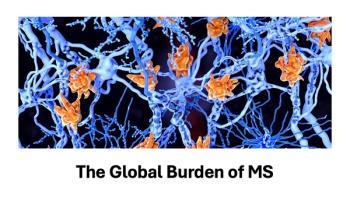
The Effects of Classroom Air Purifiers, Pest Management on Students with Active Asthma
In a study conducted by JAMA, results were recently released sharing children with active asthma had reduced symptom days, but not significantly, in the use of a school-wide integrated pest management program or a high-efficiency particulate air filter purifier in recorded 2-week time periods.
In a study conducted by JAMA, results were recently released sharing children with active asthma had reduced symptom days, but not significantly, in the use of a school-wide integrated pest management program (IPM) or a high-efficiency particulate air filter (HEPA) purifier in recorded 2-week time periods.
Over 200 students with active asthma in 41 urban elementary schools in Northeastern United States were monitored by their symptoms from 2015 -2020 in a 10 month school year. According to the study, urban minority populations experience greater asthma-related morbidity and mortality than nonurban populations.
The study revealed that while a child’s home environment can influence asthma, schools are also responsible for triggering the health condition and causing potential morbidity and mortality. Data also shared allergens from mouse, dog, cat, cockroach, mold, and dust mites are detected in 99% of school dust samples. Only mouse, dog and cat allergens were focused on for this study.
To monitor these cases of youth asthma in attempt to reduce the morbidity it can cause, HEPA purifiers and sham HEPA purifiers were placed in classrooms, and school-wide IPM was also implemented.
The HEPA purifiers were placed in the student’s primary classrooms to create dust-free air and reduce allergen particles. The IPM intervention included cleaning and removal of clutter and animal droppings, extermination with traps with nontoxic bait, and sealing of holes. The focus was on surrounding areas that fed into the student’s primary classroom and could harbor infestation by food and water sources, such as the cafeteria.
Asthma-related health outcomes were assessed by parent surveys at the start of the study and every two-month after during the school year.
Outcomes were based off of the number of symptom days with asthma during 2-week periods. Health outcomes were defined by days of slowed activity due to asthma; number of nights waking with symptoms; and days of coughing, wheezing or chest tightness.
Through-out the 5-year study the significant finding were:
- 1.5 symptom-days with asthma after use of the school-wide IPM program vs 1.9 symptom-days after no IPM across the school year.
- 1.6 symptom-days with asthma after use of HEPA filter purifiers in the class- rooms vs 1.8 symptom-days after use of sham HEPA filter purifiers in the classrooms across the school year.
- 0.11 missed school days due to asthma after use of the school-wide IPM program vs 0.17 days after no IPM across the school year.
- At 20 weeks’ postintervention, the 2-week mean was 1.3 symptom-days with asthma after use of the school-wide IPM program vs 1.4 symptom-days after no IPM across the school year.
- At 2 weeks’ postintervention, the 2-week mean was 2.7 symptom-days with asthma after use of HEPA filter purifiers in the classrooms vs 2.5 symptom-days after use of sham HEPA filter purifiers in the classrooms across the school year.
- The mean age of the population was 8.1 years (SD, 2.0 years) and 113 (48%) were female.
- The population consisted predomi- nantly of children with minority race and ethnicity (57% Hispanic and 24% Black) and 32% were from households with an annual income of less than $45,000.
While IPM programs did not significantly reduce allergens or particles, the HEPA purifiers, however, did significantly reduce airborne mouse and dog allergen particles.
Benefits of the classroom HEPA filter purifiers were also shown as important to use during the COVID-19 pandemic with the perception that these will make schools safe without any objective data.
In conclusion of the study, these practices did not improve the health of the children, but allergen levels, particle exposures, and asthma symptoms were found to be the most crucial influence on the health condition.
Newsletter
Get the latest industry news, event updates, and more from Managed healthcare Executive.






















































